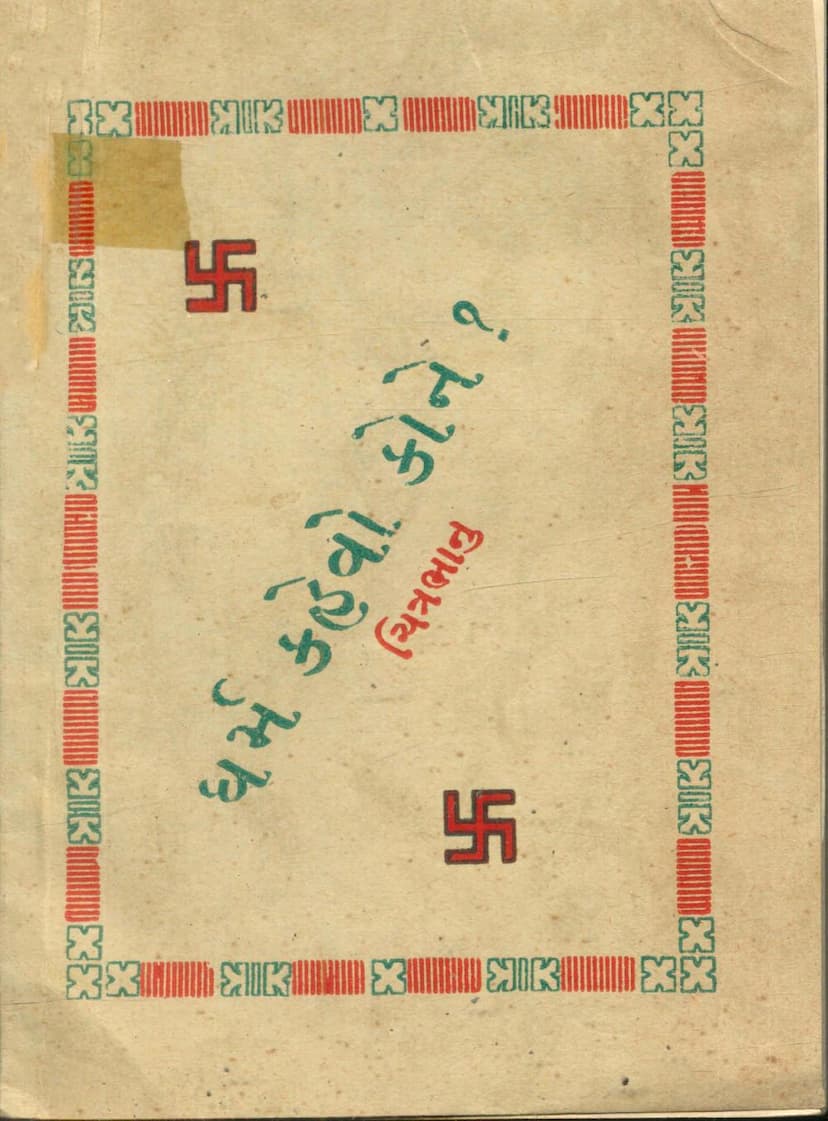Dharm Kahevo Kone
Added to library: September 1, 2025

Summary
This comprehensive summary is based on the provided Jain text, "Dharm Kahevo Kone?" by Chitrabhanu.
The book, published by Ratilal Popatlal, is a collection of discourses given by the renowned speaker Shri Chitrabhanu under the auspices of Acharya Maharaj Shri Chandrasagarsurishwarji Maharaj and Muni raj Shri Chandrakant Sagarji Maharaj. The text emphasizes the essence of Dharma, moving beyond outward rituals and focusing on inner transformation and righteous conduct.
The Core Message: What is Dharma?
The central theme of the book is to define and understand what constitutes true Dharma. The author begins by questioning humanity's obsession with external appearances. People meticulously check their reflection in the mirror, concerned about blemishes on their physical body. However, they fail to reflect on the "blemishes" on their soul, caused by actions like deceit, falsehood, lack of self-control, and unethical behavior. The author uses the mirror as a metaphor for self-reflection, urging readers to look beyond the physical and examine their inner self.
Self-Reflection and the Human Potential:
The book advocates for regular self-introspection. It poses critical questions:
- Is my life like that of an animal or a noble person?
- Is my life fragrant like a rose or repulsive like garlic?
- Have I earned blessings or curses in this life?
- Will I depart with tears or laughter?
- What is my true purpose, and am I fulfilling it?
The author highlights that humans are blessed with a precious human body, sharp intellect, and a compassionate heart, which are meant for noble pursuits and the attainment of liberation. This human form is elevated because it provides the opportunity to practice Dharma.
The True Nature of Dharma:
The author clarifies that Dharma is not merely about performing rituals, satisfying hunger, quenching thirst, or providing material comfort. Instead, Dharma is like the roots of a tree – hidden and unseen, yet the very foundation for growth, stability, and prosperity. Where Dharma is present, there is brilliance, progress, and happiness. Where it is absent, there is decline, suffering, and misery.
The Four Pillars of Dharma:
The book identifies the four fundamental pillars of Dharma according to Jain philosophy:
-
Maitri Bhav (Friendship/Benevolence): This is the primary characteristic of Dharma. It involves cultivating a feeling of universal friendship, wishing well-being for all beings, and wanting them to be free from suffering and bondage. True Maitri leads to selflessness, where one is willing to sacrifice everything for the well-being of others.
-
Pramod Bhav (Joy in Others' Virtues): This involves finding joy and happiness in the achievements, virtues, and spiritual progress of others, especially noble souls. It means celebrating their goodness and seeing them as guides on the path to liberation. The author contrasts this with the human tendency to feel shame or reluctance in bowing before virtuous individuals while readily flattering the powerful and wealthy.
-
Karuna Bhav (Compassion): This is the feeling of empathy and deep concern for the suffering of others, particularly those who are poor, suffering, or lost to unrighteousness. It involves feeling their pain as one's own and actively working to alleviate it. The author emphasizes that those who indulge in sin and worldly pleasures today will face immense suffering tomorrow, and Karuna arises from this understanding.
-
Madhyasth Bhav (Equanimity/Neutrality): This involves remaining steadfast and calm, even when facing neglect or opposition. It means trying to guide those who have strayed from the right path without becoming their cause of downfall. Even if one's advice is rejected, one should not harbor anger but maintain a balanced state of mind.
The Power of Speech (Vani):
A significant portion of the book is dedicated to the importance of speech and its eight virtues:
- Sweetness (Madhurta): Speech should be pleasant and appealing, like honey, attracting listeners.
- Expertise (Nipunata): Words should be knowledgeable, precise, and avoid flattery or undue praise.
- Conciseness (Stokastok): Speak only when necessary, and say much in few words.
- Silence (Maun): Silence is valuable and increases the impact of speech.
- Truthfulness (Satya): Speech must be truthful, as lying erodes trust.
- Humility (Namrata): Speak with humility, allowing actions to speak louder than words.
- Meaningfulness (Anuchch): Speech should be profound and meaningful, avoiding triviality and vulgarity.
- Righteousness (Dharmasanyukta): Speech should be imbued with righteousness, justice, and purity.
The author stresses that truthful, beneficial, and pleasant speech, born from deep thought and practice, is the true "tapa" (penance) of speech.
Living Dharma:
The book concludes by reiterating that true Dharma is not just about speaking but about living it. It encourages readers to cultivate these inner qualities, allowing their lives to radiate the light of truth and righteousness. The author uses poignant examples and verses to illustrate his points, urging readers to introspect and align their actions with their inner beliefs.
In essence, "Dharm Kahevo Kone?" is a profound guide to understanding and practicing Dharma in its purest form, emphasizing self-awareness, compassion, and the transformative power of righteous living and truthful, virtuous speech.